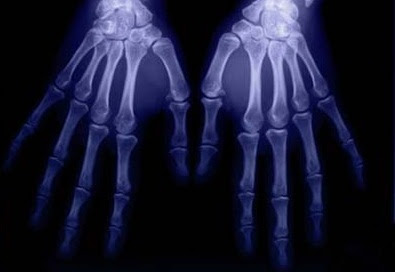
By Rob Stein, Washington Post Staff Writer
Many Americans, particularly African Americans, may be suffering from unrecognized deficiencies of a key nutrient -- vitamin D -- that increase the risk of bone problems and perhaps a host of other diseases, a growing number of scientists say.
Pediatricians scattered around the country have been surprised to see children suffering from rickets, a bone disorder caused by vitamin D deficiency that had been largely relegated to a bygone era.
A few doctors have come across adults who were disabled by severe muscle weakness and pain, sometimes for years, until they were treated for undiagnosed vitamin D deficiency. And recent studies suggest low vitamin D may be putting the elderly at higher risk for the bone-thinning disease osteoporosis and life-threatening falls and fractures.

But beyond bone and muscle problems, some evidence suggests a dearth of vitamin D may be associated with an array of more serious illnesses, including many forms of cancer, high blood pressure, depression, and immune-system disorders such as multiple sclerosis, rheumatoid arthritis and diabetes.
In response, many scientists have begun pushing to sharply boost the official recommendations for how much vitamin D everyone should get daily, either by taking supplements, by eating more food that contains the nutrient or from the sun -- a major source of vitamin D.
Suggestions that people get more sun exposure, however, have sparked an unusually intense, and sometimes bitter, debate. Skin cancer experts are alarmed that people will disregard warnings about unprotected sun exposure, making them more vulnerable to what is the most common malignancy.
The debate is complicated by the many uncertainties about vitamin D. Because the nutrient's apparently widespread functions in the body are just now being recognized, little research has been done to try to answer some of the most basic questions, such as how much is needed for optimal health.
"It's a nutrient that's been around for a long time, but it's relatively recently that there's been a lot of evidence emerging that indicates there's more to vitamin D than we thought," said Daniel Raiten of the National Institute of Child Health and Human Development, who organized a recent conference at the National Institutes of Health (news - web sites) to identify the most urgent priorities for more research.
Skin produces vitamin D when hit by ultraviolet light in sunlight. The amount depends on where people live, skin pigment, age and other factors. African Americans and other dark-skinned people, and anyone living in northern latitudes, make far less than some other groups.

With people spending more time indoors, covering up and slathering on sunblock when they are outside, and smog obscuring the sun on many days, the amount of vitamin D people create naturally is probably very low, many scientists say.
"Imagine you're a space alien looking down on Earth. You have these humans who evolved in the Horn of Africa, as nudists living around the equator. They would have been getting lots of vitamin D through their skin. Then they suddenly . . . move north and put on lots of clothes and block out most of their capacity to make vitamin D," said Reinhold Vieth, a University of Toronto vitamin D researcher. "For me it's a no-brainer. We're not getting enough."
Related articles:
http://www.eurekalert.org/pub_releases/2009-08/osu-kfo081809.php
http://www.naturalnews.com/027231_Vitamin_D_immune_system_vaccines.html

No comments:
Post a Comment